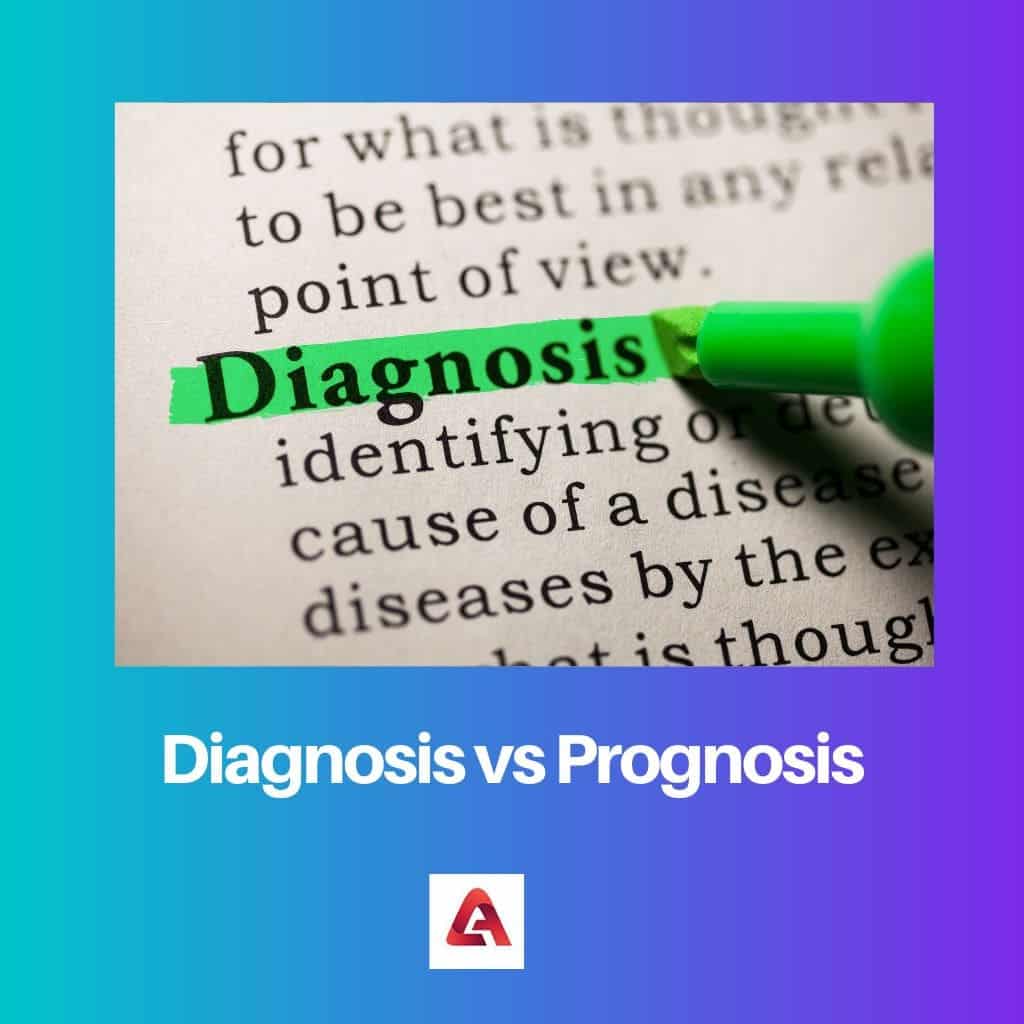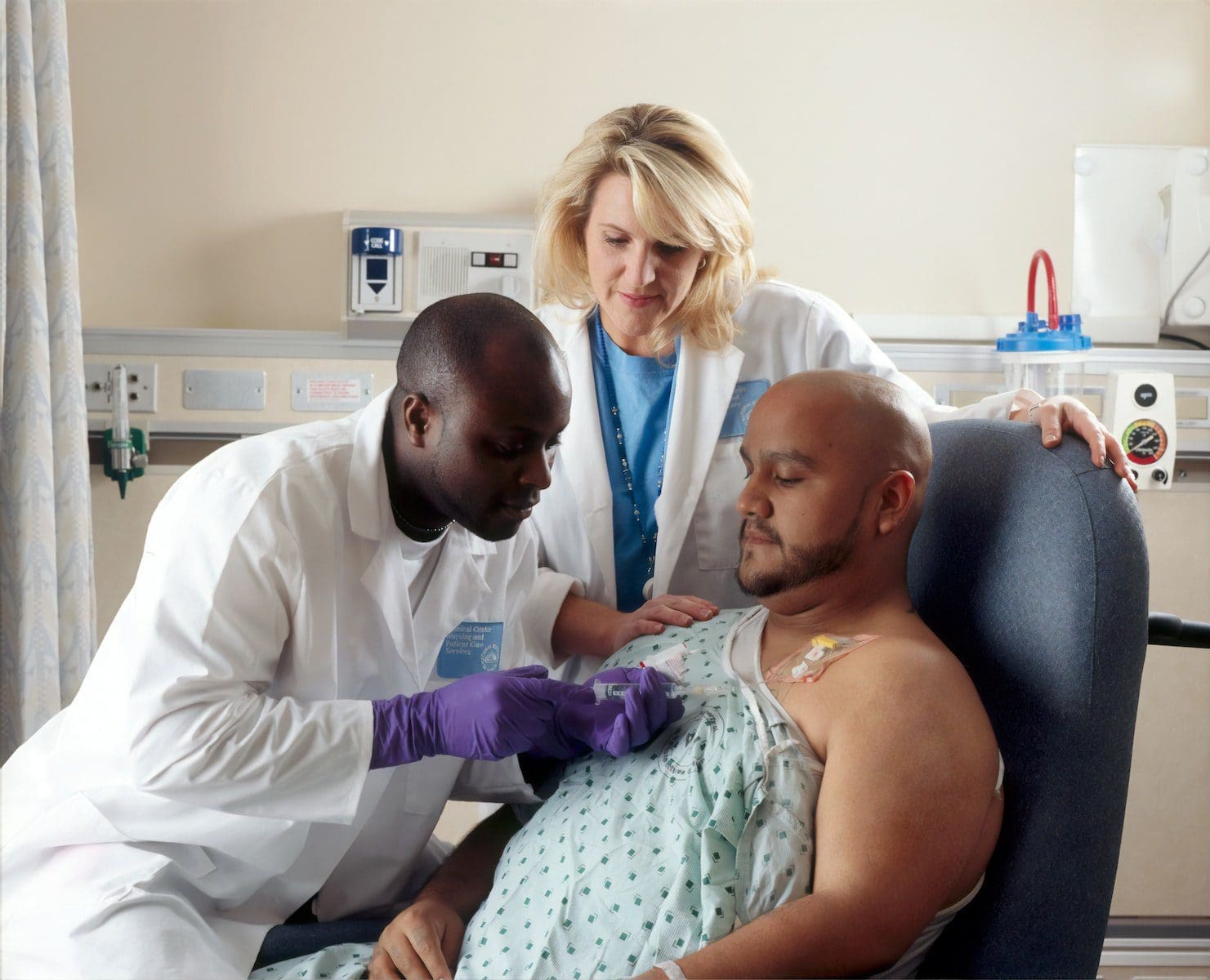Diagnosis involves identifying a medical condition through examination, tests, and symptoms, providing insights into the present state of a patient’s health. Prognosis, on the other hand, forecasts the likely course and outcome of the diagnosed condition, considering factors such as treatment effectiveness, disease progression, and potential complications, guiding healthcare decisions and patient management.
Key Takeaways
- Diagnosis is identifying a disease or condition based on symptoms, tests, and examinations.
- Prognosis refers to a disease’s likely outcome or course based on factors such as the patient’s age and general health.
- Diagnosis is essential for determining appropriate treatment options, while prognosis helps patients understand the potential risks and benefits of different courses of action.
Diagnosis vs. Prognosis
The difference between diagnosis and prognosis is that diagnosis is the identification of the disease, and prognosis is the action taken to recover from the disease.

Diagnosis is the process where the doctor or medical practitioner tries to identify the disease a person is suffering from based on the Science and symptoms he or she is displaying. Diagnosis is the first process that is followed when one visits a doctor, which is then followed by prognosis.
Prognosis is where the doctor or medical practitioner tells the patient the process that must be followed, which will help the patient recover. It includes which medicine to take and when, what diet must be followed, what lifestyle changes must be made, etc.
Comparison Table
| Feature | Diagnosis | Prognosis |
|---|---|---|
| Definition | The identification of a specific disease, condition, or problem based on symptoms, tests, and other medical information. | A prediction of the course, outcome, and potential treatment of a diagnosed disease or condition. |
| Focus | Understanding the present state of the patient’s health. | Anticipating the future course and potential outcomes of the diagnosed condition. |
| Purpose | To guide treatment decisions and provide clarity about the patient’s current health status. | To help manage expectations, plan future care, and inform decision-making for the patient and their healthcare team. |
| Information used | Based on symptoms, medical history, physical exams, laboratory tests, imaging studies, and other relevant data. | Based on established knowledge about the typical course of the specific disease or condition, as well as various factors like the patient’s age, overall health, and response to treatment. |
| Certainty | Usually more definitive, although some diagnoses may require further investigation or confirmation. | Less certain, as it involves predicting the future which can be influenced by various factors and involves probabilities and ranges. |
| Change over time | Can change as new information becomes available, such as with additional tests or the patient’s response to treatment. | Can be updated and revised as the patient’s condition evolves and treatment progresses. |
What is Diagnosis?
Diagnosis is the cornerstone of medical practice, encompassing the systematic identification and classification of diseases or health conditions afflicting individuals. It involves a comprehensive assessment of clinical signs, symptoms, laboratory tests, imaging studies, and other diagnostic modalities to reach a conclusive determination regarding the nature and extent of the patient’s ailment.
Process
The diagnostic process begins with a thorough medical history review, wherein healthcare providers gather information about the patient’s symptoms, medical background, family history, and relevant lifestyle factors. Following this, a comprehensive physical examination is conducted to assess the patient’s physiological state and identify any observable abnormalities. Subsequently, diagnostic tests such as blood tests, imaging scans (e.g., X-rays, MRI, CT scans), biopsies, and other specialized procedures may be ordered to further elucidate the underlying pathology.
Importance
Accurate diagnosis is paramount for effective patient management, as it serves as the foundation for treatment planning and therapeutic interventions. By pinpointing the specific disease or condition affecting the patient, healthcare providers can tailor treatment strategies to address the root cause and alleviate symptoms, ultimately promoting better health outcomes and improved quality of life. Moreover, timely diagnosis can facilitate early intervention, preventing disease progression, and minimizing the risk of complications.
Challenges
Despite advancements in medical technology and diagnostic techniques, the diagnostic process can pose challenges due to the complexity and variability of human health. Some conditions may present with atypical symptoms or overlapping clinical features, making accurate diagnosis challenging. Additionally, limited access to healthcare resources, disparities in healthcare delivery, and diagnostic errors can hinder the timely and accurate identification of diseases, underscoring the need for ongoing efforts to enhance diagnostic accuracy and accessibility.

What is Prognosis?
Prognosis is the medical term used to describe the anticipated course and outcome of a disease or health condition over time. It involves the prediction of the likely progression of the illness, including factors such as the expected recovery, response to treatment, risk of complications, and overall prognosis. Prognostic assessments provide valuable insights into the patient’s future health trajectory, guiding healthcare decisions and patient management strategies.
Factors Considered
Healthcare providers consider a myriad of factors when determining prognosis, including the nature and severity of the underlying condition, the patient’s overall health status, age, comorbidities, lifestyle factors, and response to treatment. Additionally, prognostic indicators such as biomarkers, imaging findings, and prognostic scoring systems may be utilized to evaluate disease progression and predict outcomes more accurately.
Importance
Prognosis plays a pivotal role in patient care by helping healthcare providers and patients make informed decisions regarding treatment options, care planning, and end-of-life considerations. A favorable prognosis may instill hope and optimism, motivating patients to actively participate in their treatment and rehabilitation efforts. Conversely, an unfavorable prognosis may necessitate discussions about palliative care, hospice services, and supportive interventions to optimize the patient’s quality of life and provide compassionate end-of-life care.
Challenges
Predicting prognosis can be challenging due to the inherent uncertainties and variability associated with disease progression and treatment outcomes. Factors such as individual variability in treatment response, unforeseen complications, and the emergence of new medical developments may influence prognostic accuracy. Furthermore, prognostic assessments may be complicated by subjective interpretations, limited data availability, and ethical considerations surrounding prognostic disclosure and decision-making. Despite these challenges, ongoing research and advancements in predictive modeling and personalized medicine hold promise for improving prognostic accuracy and enhancing patient-centered care.

Main Differences Between Diagnosis and Prognosis
- Diagnosis:
- Identifies a specific medical condition or disease in a patient.
- Analyzes symptoms, medical history, and test results.
- Leads to a definitive determination of the illness or condition present.
- Prognosis:
- Predicts the likely course and outcome of a disease.
- Takes into account factors such as the patient’s age, overall health, disease progression, and treatment response.
- Provides information on the expected development of the illness over time, potential complications, and possible outcomes.
- Helps patients and healthcare providers understand the long-term implications of the disease and make informed decisions about treatment and care.




